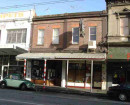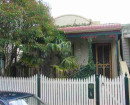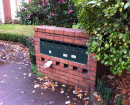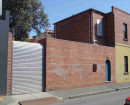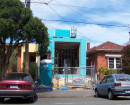CORIO FREEZING WORKS AND ABATTOIR WHARF
CORIO QUAY ROAD NORTH GEELONG, GREATER GEELONG CITY
-
Add to tour
You must log in to do that.
-
Share
-
Shortlist place
You must log in to do that.
- Download report
Statement of Significance
This record has minimal details. Please look to the right-hand-side bar for any further details about this record.
-
-
CORIO FREEZING WORKS AND ABATTOIR WHARF - History
Construction started on Corio Quay in February 1909 when the Thomas Bent moored at North Geelong to dredge and prepare the area for the construction of the piers (Geelong Advertiser 10/02/1909:2). A freezing works and a grain scheme run by the Harbour Trust and the Oriental Timber Company, including a log pond at Cowies Creek, were all planned for Corio Quay (Geelong Advertiser 15/2/1909:3). The works for the new facilities included the construction of quays, laying of rails, the sinking excavations and embankments, dredging and land reclamation and the erection of the freezing chambers (Colac Herald 24/3/1909:1). The wharves at Corio Quay were to be 15ft (4.6m) above low water with a water depth of 37ft (11.3m) with single or double decked cargo sheds, three lines of railway connected to the main line, tracks for travelling electric cranes, and roadways at the back of the wharf for the handling of goods from the road (Ballarat Star 26/8/1909:4; Geelong Advertiser 25/8/1909:4). Goods were to be loaded by gravitation directly into vessels or into either floor of the cargo sheds or onto the wharf (Geelong Advertiser 25/8/1909:4). The Corio Quay Freezing Works and Abattoir were constructed by the Geelong Harbour Trust in 1909. Operations commenced in November 1909 with local butcher, Mr W. Fraser, given the honour of killing the first lamb (Age 4/11/1909:8). Machinery capable of freezing 3,000 sheep with an average weight of 45lb (20.4kg) within 24 hours was installed at the works (Geelong Advertiser 25/8/1909:4). The brick cool stores had a capacity of 180,000 cubic feet with eight first floor freezing chambers, eight ground floor stores, two cooler rooms and basement stores (Geelong Advertiser 25/8/1909:4). Next to the freezing chambers were the cooling room, a room for weighing and grading carcasses with a lower floor for the grading of rabbits and packing stores, a slaughter house to accommodate 32 butchers, manure and tallow works and a skin drying shed will be part of the Corio Freezing Works complex (Geelong Advertiser 25/8/1909:4). Rails ran between the stores and the engine house and a 15ft (4.6m) platform ran along the cool stores with trap doors at regular intervals that allowed for goods to be received from the rail or loaded onto vessels at the wharf by gravitation which minimised the handling required (Geelong Advertiser 25/8/1909:4). Grain shipments were a key export from Geelong Port. Foundations for a grain shed at the seaward end of the freezing works were laid in 1912 by Dreyfus and Co (Geelong Advertiser 13/1/1912:4). A cantilever conveyor system for loading wheat at Corio Quay was installed in 1916 to increase the speed of grain handling and loading into the ship’s hold (Geelong Advertiser 28/3/1916:2). The Grain Elevators Board terminal was opened in 1936, wheat silos were constructed in late 1937 and early 1938 and the bulk wheat pier and grain elevators were completed in 1939 (GeelongPort 2018:19). The works were leased to Sims Coopers and Company Freezing Works for many years and by the 1930s the Geelong Harbour Trust had taken over the works and it became known as the Harbour Trust Freezing Works or Corio Freezing Works (Duncan 2004a). By the 1939 the Corio Freezing Works were treating and exporting an average of almost 400,000 lamb and mutton carcasses a year (Argus 23/5/1939:13). A fire consumed the freezing works in 1984, which ended the meatworks that had been in operation on Corio Quay South since 1909 (GeelongPort 2018:27).
Throughout the years, Corio Quay was dredged regularly in order to maintain the required depth for the large vessels. The construction of new wharves and piers also required dredging with the sediment raised by the dredge used for land reclamation along the foreshore. Works at Corio Quay continued throughout the first half of the twentieth century, resulting in a changed foreshore.CORIO FREEZING WORKS AND ABATTOIR WHARF - Interpretation of Site
The dolphin piers/wharves appear to be associated with the original freezer works. Larger underground concrete rooms built into the side of what (at first) appears to be a retaining wall are probably the remains of the freezing works and abattoirs.
CORIO FREEZING WORKS AND ABATTOIR WHARF - Historical Significance
This site is historically significant as the first frozen meat exports in the country.
Heritage Study and Grading
Heritage Victoria - Maritime Infrastructure Assessment Project
Author: Heritage Victoria
Year: 2005
Grading:Heritage Inventory Description
CORIO FREEZING WORKS AND ABATTOIR WHARF - Heritage Inventory Description
Remnants of timber piled dolphins and wharves, underground freezing works and abattoirs. Remains of structural components of the freezing works (including factory buildings and wharves) both underwater and underground. Possible archaeological relics associated with pier use and structural remains.
-
-
-
-
-
FORMER FEDERAL WOOLLEN MILLS
 Victorian Heritage Register H1938
Victorian Heritage Register H1938 -
FORD MOTOR COMPANY COMPLEX
 Victorian Heritage Register H2305
Victorian Heritage Register H2305 -
NORTH SHORE BATHS
 Victorian Heritage Inventory
Victorian Heritage Inventory
-
-



